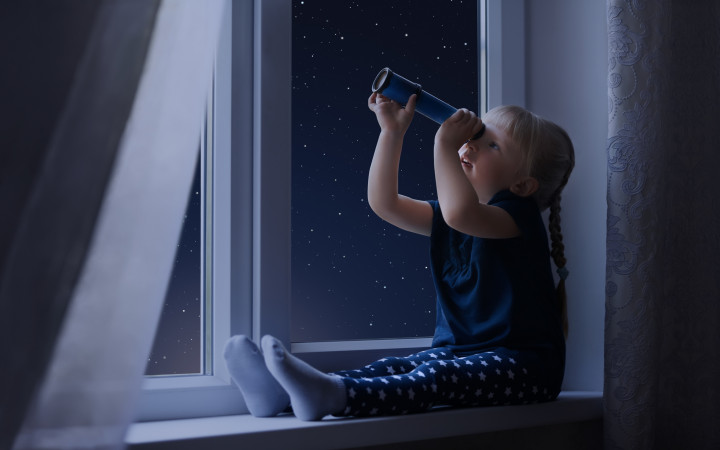Today’s Wonder of the Day was inspired by Rafaela from Manila. Rafaela Wonders, “Why does the moon change shape?” Thanks for WONDERing with us, Rafaela!
People have always been fascinated by the Moon. We have plenty of good reasons to be! The Moon controls our tides, causes solar eclipses, and appears to have a face. To add to our fascination, the Moon even changes shape!
If you've spent any amount of time looking at the Moon, you know that the shape we see changes from one night to the next. Sometimes, it seems to get smaller. Other times, it seems to grow. We all know that the Moon changes shape, but have you ever WONDERed why?
The shape we see depends on the Moon's position. As the Moon travels around the Earth, it reflects sunlight. From Earth, we can only see the part of the Moon that is facing us. The shape of the Moon we see on any given night depends on how much of the Moon's face is in sunlight at that point in its cycle.
The shapes of the Moon are called phases. The phases of the Moon occur over the course of the Lunar Cycle, which lasts about 27 days. At the beginning of the Lunar Cycle, the Moon is between the Earth and the Sun. During this phase, the side of the Moon reflecting light from the Sun is facing away from Earth, so we can't see the Moon at all! We call this phase the New Moon.
As the Moon revolves, we are able to see more of it each night. During this time, the Moon is "waxing," meaning it seems to be growing larger. It starts out as a crescent, which is when the Moon looks like a small curve in the sky. Of course, the entire Moon is still there, but we're only able to see that small part that's reflecting sunlight because of the Moon's position in its revolution.
Around the middle of the Lunar Cycle, the Earth is between the Sun and Moon, so we can see the entire face of the Moon at night. That's what we call a Full Moon. Occasionally during a Full Moon, the Earth casts a shadow over the face of the Moon, causing a Lunar Eclipse.
After the Full Moon, the Moon seems to shrink. As the Moon approaches the end of its revolution, we see less and less of it each night. During this time, we say the Moon is "waning," or getting smaller. Toward the end of the cycle, the Moon is just a crescent in the sky again. Finally, the Moon reaches the end of its revolution and the cycle starts again with a New Moon.
Have you ever heard that there's a "dark side" of the Moon? Many people believe that the dark side of the Moon never sees sunlight. However, that's not true. As the Moon revolves around the Earth, it also rotates on its own axis, just like the Earth does. However, the Moon's rotation is much slower than the Earth's. It takes the same amount of time to rotate as it does to revolve -- about 27 days. Since the Moon is rotating at the same speed it's revolving, the same side of the Moon faces Earth at all times. The side we never see is the dark side of the Moon. We call it "dark" because it can't be seen from Earth, but it does see sunlight, just like the rest of the Moon!
Have you ever watched the Moon change shape? How about the movement of the stars? The night sky can be enchanting if you pay it close attention. The next time you're outside on a clear night, be sure to look up! You might just catch a glimpse of something new!
Standards: ESS1.A, ESS1.B, CCRA.R.3, CCRA.R.10, CCRA.R.7, CCRA.W.3, CCRA.SL.2




